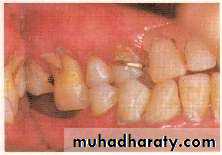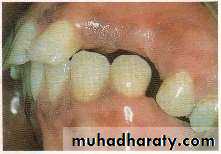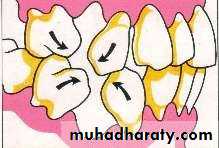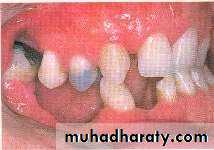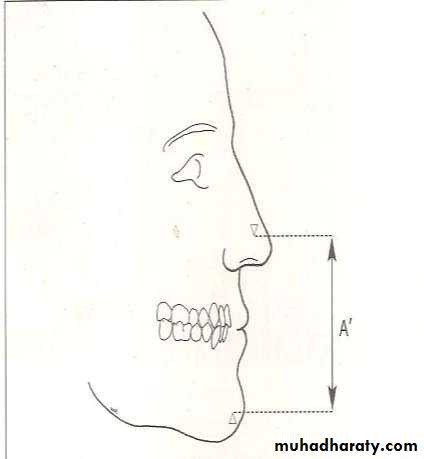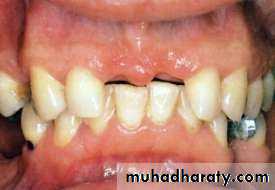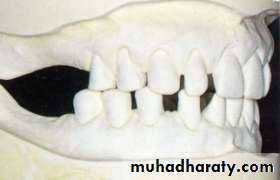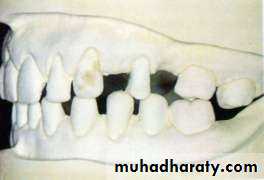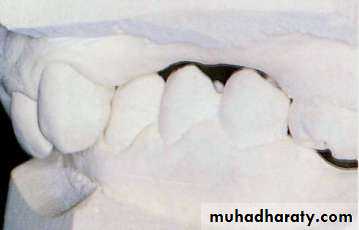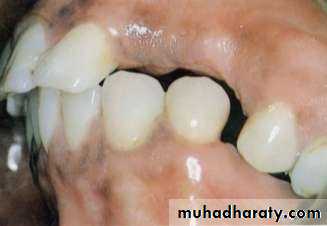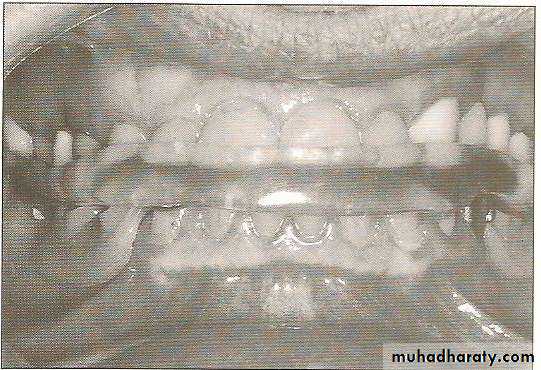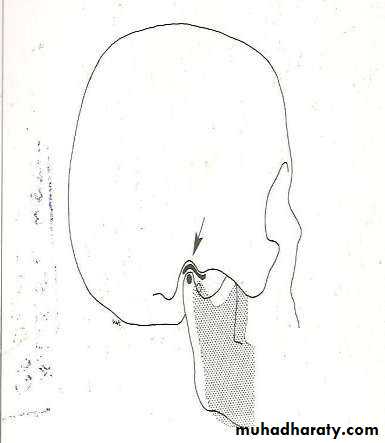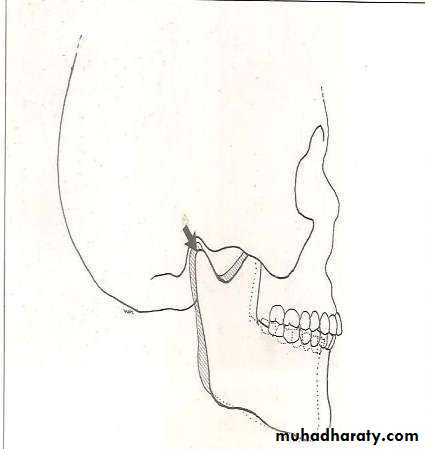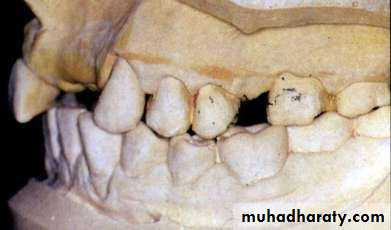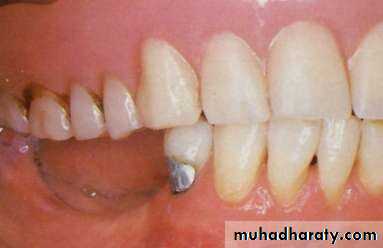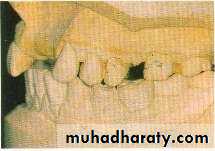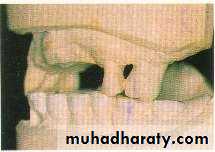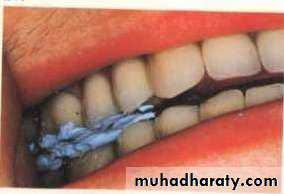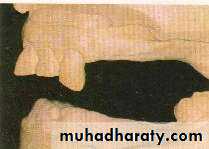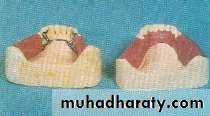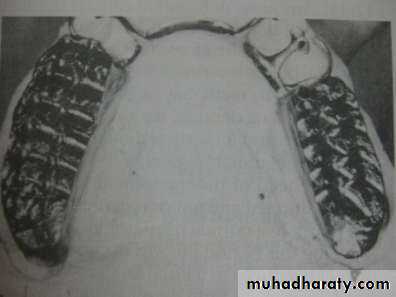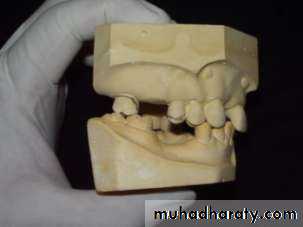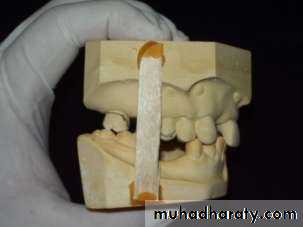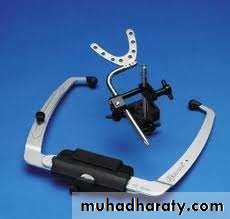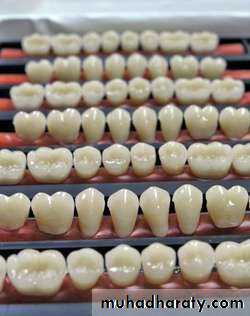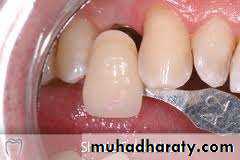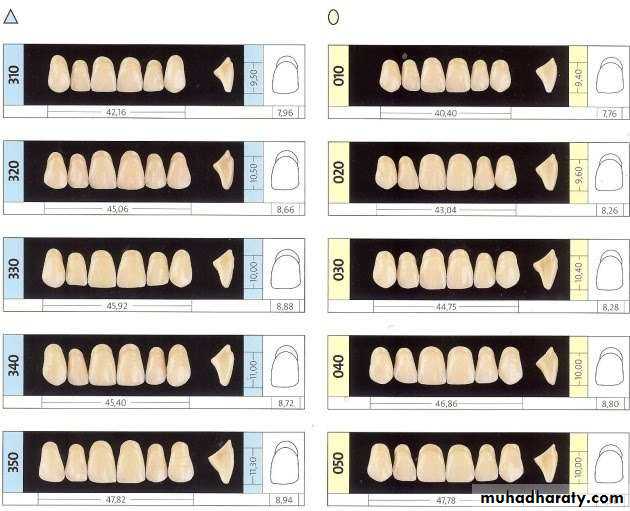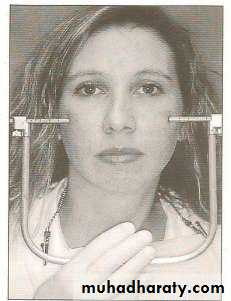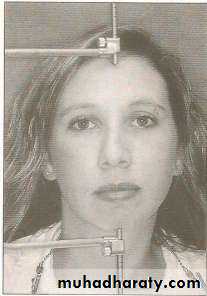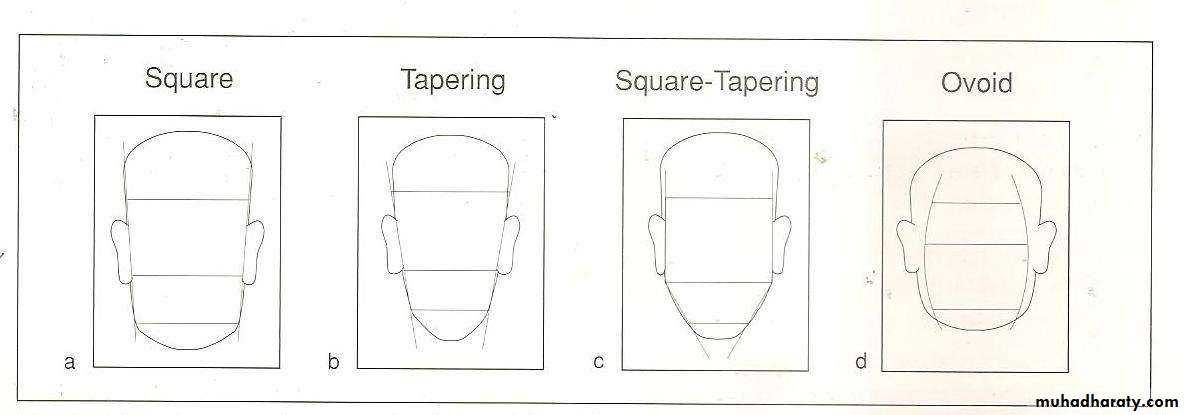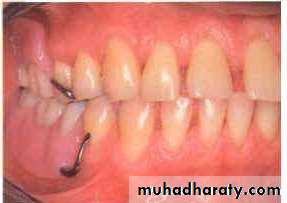• JAW RELATION RECORDING AND OCCLUSION IN REMOVABLE PARTIAL DENTURES
Assis.Prof.Dr.Radhwan Himmadi HasanB.D.S., M.Sc. , Ph.D.
2018
Assis.Prof.Radhwan H.Hasan
1
• OBJECTIVES
• To create an arrangement of the opposing teeth which is in harmony with the mandibular movements.• To provide the patient with a masticating mechanism that is at the same time efficient, comfortable and aesthetically pleasing.
• Need to distribute the functional forces between the remaining natural teeth and the residual ridge to withstand stress
• Miller and Grasso, Removable Partial Prosthodontics; 2nd edition, pg215
Assis.Prof.Radhwan H.Hasan
2
• It may provide information which is difficult to obtain by intraoral examination
• Problems such as…..
• 1. Interarch distance
• - enlarged maxillary tuberosity…..• -moderate to severe undercuts….
• Stewarts- Clinical Removable Partial Prosthodontics.
• EVALUATION OF DIAGNOSTIC CAST
Assis.Prof.Radhwan H.Hasan
3
• Occlusal plane:
• Irregular due to extrusion….• Several treatment options….
• Stewarts- Clinical Removable Partial Prosthodontics.
Assis.Prof.Radhwan H.Hasan4
ons….
• Tipped or malposed teeth:
• Minor orthodontic correcti
• Sometimes removal…..
• Stewarts- Clinical Removable Partial Prosthodontics.
Assis.Prof.Radhwan H.Hasan5
• 4. Occlusion:
• - lingual surfaces can be assessed• -Selective grinding and
• coronal reshaping
• - Interferences…..
• Stewarts- Clinical Removable Partial Prosthodontics.
Assis.Prof.Radhwan H.Hasan
6
• Vertical Jaw Relations:
• Vertical Dimension at rest Occlusion Vertical Dimension
• Horizontal Jaw Relations:
• Centric Relation Centric Occlusion Eccentric Relations
• Protrusive relation
• Lt & Rt Lateral relations
• JAW RELATION RECORDS
Assis.Prof.Radhwan H.Hasan
7
• VERTICAL DIMENSION OF OCCLUSION
• It is measured between two arbitrary point marked on the face one above the mouth one below the mouth
• Stewarts- Clinical Removable Partial Prosthodontics.
• rest
• Two vertical dimension are commonly recognised
• Vertical dimension at
• Vertical dimension at
• occlusion
Assis.Prof.Radhwan H.Hasan
8
• ALTERING THE EXISTING OVD
• Normally the OVD of a partially edentulous patient is provided by the opposing natural teeth contact and it should not be changed
• Stewarts- Clinical Removable Partial Prosthodontics.
Assis.Prof.Radhwan H.Hasan9
• ALTERING THE EXISTING OVD cont..
• 1.Symptoms of diminished OVD exist such as.
• tired aching muscles, unexplained pain in the head and neck region, shortened nose-chin distance (appearance of premature aging).• Stewarts- Clinical Removable Partial Prosthodontics.
• 2. Excessive Free way Space or ‘over-closure’ of the jaws.
Assis.Prof.Radhwan H.Hasan
10
• HOW TO ALTER THE EXISTING OVD
• Confirm the loss of Vertical dimension by taking history, and the presence of excessive free-way space.• Increase the existing OVD temporarily by fabricating an acrylic resin occlusal overlay appliance in maximum intercuspation, ensuring that 4mm of freeway space must
• exist.
• Stewarts- Clinical Removable Partial Prosthodontics.
Assis.Prof.Radhwan H.Hasan11
• HORIZONTAL JAW RELATION
• Stewarts- Clinical Removable Partial Prosthodontics.Assis.Prof.Radhwan H.Hasan
12
• It is determined after a correct vertical dimension of occlusion is established
• There are two horizontal relationships that are of importance in developing occlusion• Centric relation
• Centric occlusionAssis.Prof.Radhwan H.Hasan
13
• HORIZONTAL JAW RELATION
• What to Record – C.R or C.O• .
• Centric Occlusion should be recorded whenever a patient requiring a partial denture has cusps on remaining natural teeth that can guide the mandible back to this position,
Assis.Prof.Radhwan H.Hasan
14• HORIZONTAL JAW RELATION
• C.R should be recorded, e.g., for distal extension RPD, or when the opposing arch is edentulous.Assis.Prof.Radhwan H.Hasan
15• ESTABLISHING OCCLUSAL RELATIONSHIP
• McCracken’s- Removable Partial Prosthod• 5 methods can be used for establishing occlusal relationship in removable partial denture fabrication
• Direct apposition of cast
• Interocclusal records with posterior teeth remaining
• Occlusal relation using occlusion rims on record bases
• Jaw relation made entirely on occlusion rims 5.Functionally generated path
Assis.Prof.Radhwan H.Hasan
16
• DIRECT APPOSITION OF CAST
• Used when there are sufficient opposing teeth that remain in contact.• This method at the best can perpetuate the existing vertical dimension.
• Any existing occlusal discrepancy present between the natural dentition• McCracken’s- Removable Partial Prosthod
Assis.Prof.Radhwan H.Hasan17
• INTEROCCLUSAL RECORDS WITH POSTERIOR TEETH REMAINING
• Used when sufficient natural teeth are remaining but the cast cannot be occluded by hand articulation• Interocclusal records have to be used to records the jaw relation
• Usually softened, metal- reinforced wafer of baseplate or set up wax in used
• McCracken’s- Removable Partial Prosthod
Assis.Prof.Radhwan H.Hasan18
• OCCLUSAL RELATION USING OCCLUSION RIMS ON RECORD BASES
• Used when on or more distal extension areas are present• Tooth supported edentulous space is large or when opposing teeth do not meet
• In this method the missing teeth are replaced by occlusal rims• McCracken’s- Removable Partial Prosthod
Assis.Prof.Radhwan H.Hasan19
• FUNCTIONALLY GENERATED PATH
• Miller and Grasso, Removable Partial Prosthodontics; 2nd edition, pg215• Is based on the theory that the patient is the best articulator for developing the occlusion.
• Using the removable partial denture framework
• as a base, a dynamic recording of the occlusal patterns is generated in the• patient’s mouth under normal functional conditions.
Assis.Prof.Radhwan H.Hasan
20• SELECTION OF AN ARTICULATOR
• Based on adjustability, articulators are classified as:
• Nonadjustable articulators
• Kennedy class III• Functionally generated path
• Semi adjustable articulators
• 1. Kennedy class I II IV• Highly adjustable articulators
• 1. Used when extensive occlusal rehabilitation is done
• Stewarts- Clinical Removable Partial Prosthodontics
Assis.Prof.Radhwan H.Hasan
21
• Miller and Grasso, Removable Partial Prosthodontics; 2nd edition, pg215
• MOUNTING THE CAST ON ARTICULATOR• The cast have to be transferred to the articulators
• ARBITARY MOUNTING
• MOUNTING USING FACE BOWAssis.Prof.Radhwan H.Hasan
22
• ARBITARY MOUNTING OF CAST
• The cast are properly related to each other in horizontal and vertical planes
• They are secured using stick wax
• Then they are mounted in the centre of the articulator, midline of the cast aligns with the incisal pin and occlusal plane
• parallel to the bench topMiller and Grasso, Removable Partial Prosthodontics; 2nd edition, pg215
Assis.Prof.Radhwan H.Hasan
23• FACE BOW TRANSFER
• It relates the maxillary cast to the opening and closing axis of the articulator
• It also places the maxillary cast in the correct horizontal plane.
• Facebow should be compatible with the chosen articulator.
• Stewarts- Clinical Removable Partial ProsthodonticsAssis.Prof.Radhwan H.Hasan
24
• SELECTION OF DENTURE TEETH
• Choice of materials• Acrylic resin denture teeth
• Porcelain denture teeth,• .In more recent years
• Glass ceramics and• Composite materials.
• John R. Ivanhoe , Kevin D. Plummer; Removable partial denture occlusion; Dent
• Clin N Am 48 (2004) 667–683Assis.Prof.Radhwan H.Hasan
25
• ACRYLIC RESIN DENTURE TEETH
• Resilient,
• Wear-resistant,
• Natural-sounding in function, and
• Aesthetic
• They are easy to adjust, can be recontoured when necessary,
• Polished with little effort
• low abrasion resistance
• Proper function of the occlusal relationships must be checked more frequently when acrylic resin teeth are used
• ADVANTAGES DISADVANTAGES
• John R. Ivanhoe , Kevin D. Plummer; Removable partial denture occlusion; Dent• Clin N Am 48 (2004) 667–683
Assis.Prof.Radhwan H.Hasan
26
• PORCELAIN DENTURE TEETH
• John R. Ivanhoe , Kevin D. Plummer; Removable partial denture occlusion; Dent• Clin N Am 48 (2004) 667–683
• High abrasion resistance
• Exhibit minimal wear
• Highly Aesthetic
• match the porcelains used for fixed restorations
• Sound unnatural to the patient
• Brittle
• Chip or crack,
• Difficult to adjust, recontour, and polish
• ADVANTAGES
• DISADVANTAGES
Assis.Prof.Radhwan H.Hasan
27
• ARRANGMENT OF PROSTHETIC TEETH
• ANTERIOR TEETH
• Shade:-
• Should be selected using• the manufactures shade guide
• Should be done as quick as possible
• Natural light should be used• Stewarts- Clinical Removable Partial Prosthodontics
Assis.Prof.Radhwan H.Hasan28
ARRANGMENT OF PROSTHETIC
TEETH cont...• MOLD
• Each mold exhibits a different shape and size and also different surface characteristics
• Stewarts- Clinical Removable Partial Prosthodontics
Assis.Prof.Radhwan H.Hasan29
• Mold selection is based on two important factors:
• The space that has been created by tooth loss.• If single tooth is replaced….
• If multiple anterior teeth are replaced…..
• HOUSE technique
• Stewarts- Clinical Removable Partial ProsthodonticsAssis.Prof.Radhwan H.Hasan
30
• 2) Overall form or shape of the teeth.
• Stewarts- Clinical Removable Partial Prosthodontics
Assis.Prof.Radhwan H.Hasan31
• ARRANGMENT OF PROSTHETIC TEETH
• POSTERIOR TEETH• They should fit into the edentulous spaces
• But be in harmony with the natural existing occlusion also• Stewarts- Clinical Removable Partial Prosthodontics
Assis.Prof.Radhwan H.Hasan32
• POSITION OF NATURAL TEETH
• Arthur R. Roraff, Arranging artificial teeth according to anatomic
• Landmarks J. Prosthet. Dent. 1977;38,2:120-131
• It is desirable to place artificial denture teeth in close proximity to the original position of the natural teeth..
• Landmarks for the anterior teeth
• 1.Incisive papilla 2.Labial vestibuleAssis.Prof.Radhwan H.Hasan
33
• Landmarks for the occlusal plane
• Parotid papilla• Retromolar pad
• Commissures of the lips• Landmarks for the posterior teeth 1.Maxillary tuberosity 2.Retromolar pads
• Arthur R. Roraff, Arranging artificial teeth according to anatomic
• Landmarks J. Prosthet. Dent. 1977;38,2:120-131
Assis.Prof.Radhwan H.Hasan
34
• If a physiologic state exists, maintain the patient’s maximum intercuspal position.
• Bilateral simultaneous contacts of the opposing anterior and posterior teeth should be established in restored occlusion
• Do not alter a patient’s existing occlusal scheme in lateral movement unless such alterations are needed to correct a nonphysiologic condition.
• John R. Ivanhoe , Kevin D. Plummer; Removable partial denture occlusion; Dent
• Clin N Am 48 (2004) 667–683
• PRELIMINARY OBJECTIVES FOR ESTABLISHING AN OCCLUSAL SCHEME
Assis.Prof.Radhwan H.Hasan
35
• 4. If the restoration must re-establish lateral guidance, canine- protected articulation is preferable when the remaining natural canines are present and not periodontally compromised.
• John R. Ivanhoe , Kevin D. Plummer; Removable partial denture occlusion; Dent
• Clin N Am 48 (2004) 667–683
• 5.Establish group function or a unilateral balanced articulation for patients with missing canines being replaced by a removable prosthesis or periodontally compromised canines that will be maintained
Assis.Prof.Radhwan H.Hasan
36
• 6.Do not establish nonworking contacts on remaining natural teeth unless these teeth are opposed by a complete denture for which bilateral balanced articulation is desirable
• John R. Ivanhoe , Kevin D. Plummer; Removable partial denture occlusion; Dent
• Clin N Am 48 (2004) 667–683
• 7.When there are healthy remaining natural anterior teeth, posterior tooth contact during the protrusive movement is not desirable
Assis.Prof.Radhwan H.Hasan
37
• DETERMINING THE OCCLUSAL SCHEME
• John R. Ivanhoe , Kevin D. Plummer; Removable partial denture occlusion; Dent
• Clin N Am 48 (2004) 667–683
• The number and positions of the remaining natural teeth in both the arch in which a removable partial denture is being fabricated and the opposing arch determine the necessary occlusal scheme.
Assis.Prof.Radhwan H.Hasan
38
• Class III removable partial denture
• John R. Ivanhoe , Kevin D. Plummer; Removable partial denture occlusion; Dent• Clin N Am 48 (2004) 667–683
• If the existing occlusion is physiologically healthy, the patient is restored to the existing occlusal scheme
• A group function articulation is recommended if the patient’s natural canine is missing or periodontally compromised
• A balanced articulation is recommended if the restoration is to oppose a complete denture
Assis.Prof.Radhwan H.Hasan
39
• Class II removable partial denture
• John R. Ivanhoe , Kevin D. Plummer; Removable partial denture occlusion; Dent• Clin N Am 48 (2004) 667–683
• Group function articulation should be avoided when there are no remaining premolars.
• Except when opposing a complete denture, a balanced articulation should be avoided to prevent nonworking contacts on natural teeth.
Assis.Prof.Radhwan H.Hasan
40
• Class I removable partial denture
• Balanced articulation is recommended for patients for whom canine-protected articulation is not possible to provide bilateral occlusal contacts for increased denture stability.• John R. Ivanhoe , Kevin D. Plummer; Removable partial denture occlusion; Dent
• Clin N Am 48 (2004) 667–683
Assis.Prof.Radhwan H.Hasan
41
• Class IV removable partial denture
• John R. Ivanhoe , Kevin D. Plummer; Removable partial denture occlusion; Dent• Clin N Am 48 (2004) 667–683
• During excursive movements the anterior artificial teeth should either disocclude or have passive occlusal contact.
• A balanced articulation is recommended if the restoration is to oppose a complete denture
Assis.Prof.Radhwan H.Hasan
42

